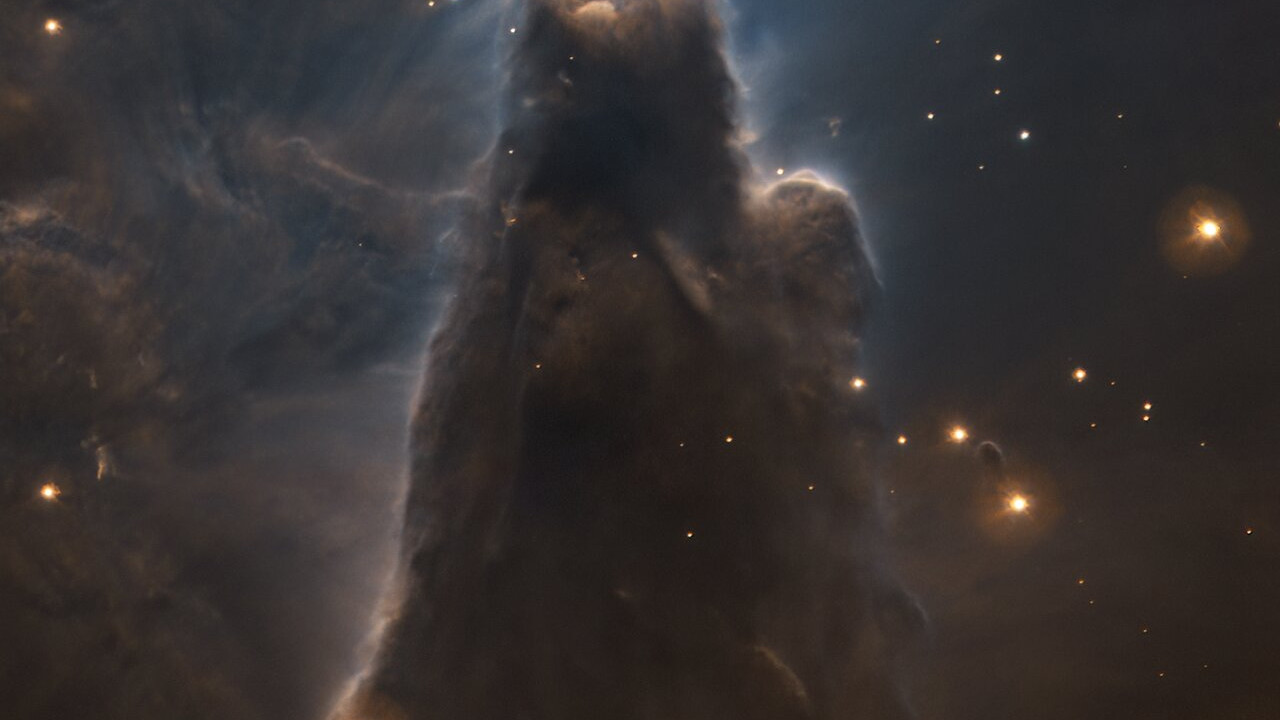
ESO’s Gift for 60 Years – A world of creativity, rebirth and life, as impressive as its features
It could be… the shadow of Darth Vader from Star Wars, or a space item. The Conic Nebula is equally impressive in appearance, with properties it offers that have been studied by the scientific community. Only 2,500 light-years from Earth, it is a world of creation, rebirth, and life. Nebulae are the “wombs” of the later worlds, with all the qualities that such a thing could have.
The image we see was taken earlier in 2022, and was released by ESO to celebrate its 60th anniversary. On October 5, 1962, five countries signed the contract to create the European Space Agency. Now, six decades later and with the support of 16 member countries and a strategic partner, ESO brings together scientists and engineers from around the world to develop and operate advanced ground-based observatories in Chile and showcase innovative astronomical discoveries.
In this new image, we look at the center of the Conical Nebula, part of the larger star-forming region NGC 2264 and discovered by astronomer William Herschel in the late 1700s. In the sky, we find this horn-shaped nebula in the constellation Unicorn.
Located less than 2,500 light-years away, this Conical Nebula is relatively close to Earth, making it a well-studied object. But this image is more dramatic than ever, showing off the dark, hazy and impenetrable appearance of the nebula in a way that makes it look like a mythical creature.
The Conical Nebula is an excellent example of the column-like shapes that grow in giant clouds of cold molecular gas and dust known to form new stars. This type of plume results when massive, bright blue stars that formed recently emit stellar winds and intense ultraviolet radiation that removes material from the surrounding area. When this material is pulled away from young stars, gas and dust are compressed into dense, dark, elongated, column-like shapes. This process helps create the dark Conical Nebula.
In this image, taken with the FOcal Reducer and Low Detection Spectrograph 2 (FORS2) at ESO’s VLT in Chile, hydrogen gas is shown in blue and sulfur gas in red. Using these filters makes bright blue stars, indicative of recent star formation, appear almost golden, in contrast to the dark, diamond-like cone.
This image is just one example of the many amazing and impressive observations that ESO’s telescopes have made over the past 60 years. Although this was taken for display purposes, the vast majority of ESO’s time is devoted to scientific observations that allowed us to take the first image of an exoplanet, study the black hole at the center of our galaxy and find evidence of the expansion of our universe accelerating.
The European Southern Observatory (ESO) allows scientists around the world to discover the secrets of the universe for the benefit of all. We design, build and operate world-class observatories on Earth – which astronomers use to address exciting questions and spread the magic of astronomy – and promote international cooperation in astronomy. Founded as an intergovernmental organization in 1962, today ESO supports 16 member states (Austria, Belgium, Czech Republic, Denmark, France, Finland, Germany, Ireland, Italy, Netherlands, Poland, Portugal, Spain, Sweden, Switzerland, and the United States Kingdom), along with host country Chile and Australia as a strategic partner.
source: skai.gr
Read them today’s news And get the latest news.
Follow Skai.gr on Google News and be the first to know all the news.

“Total alcohol fanatic. Coffee junkie. Amateur twitter evangelist. Wannabe zombie enthusiast.”







More Stories
Is this what the PS5 Pro will look like? (Image)
Finally, Windows 11 24H2 update significantly boosts AMD Ryzen – Windows 11 performance
Heart Surgeon Reveals The 4 Things He ‘Totally Avoids’ In His Life